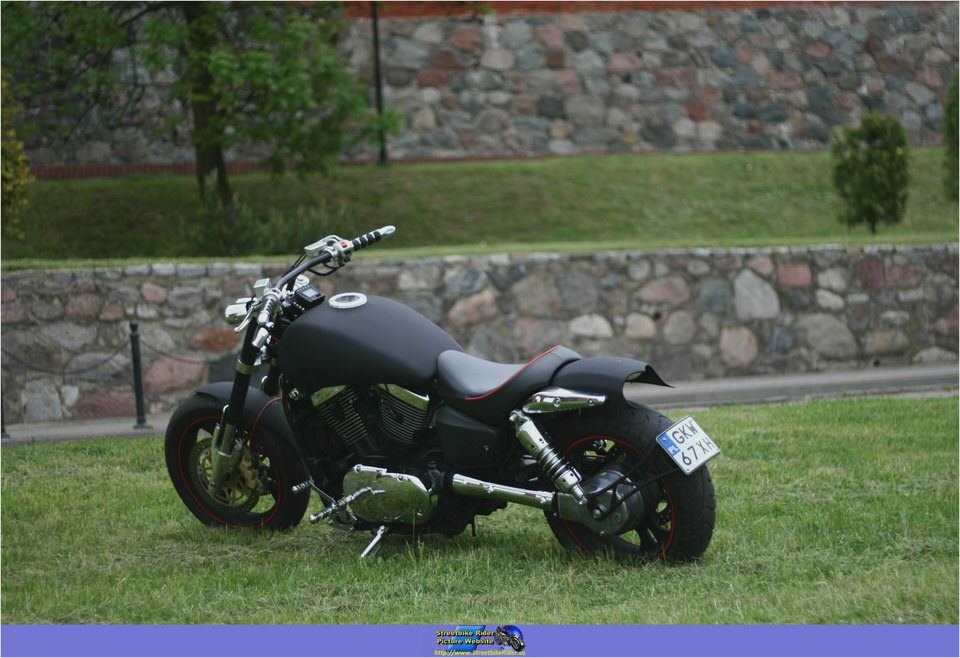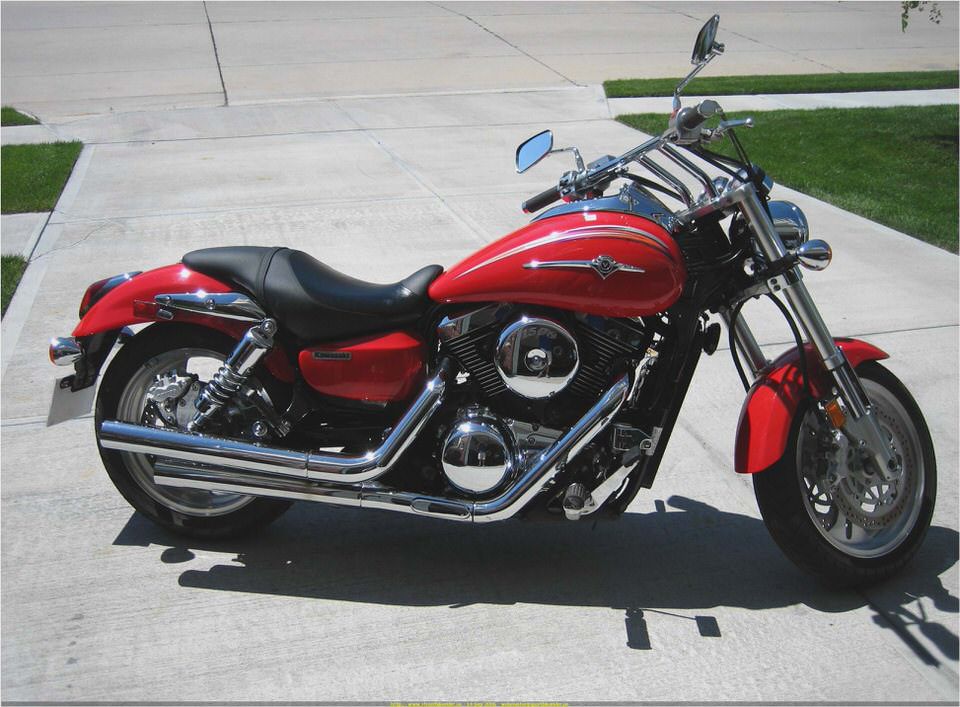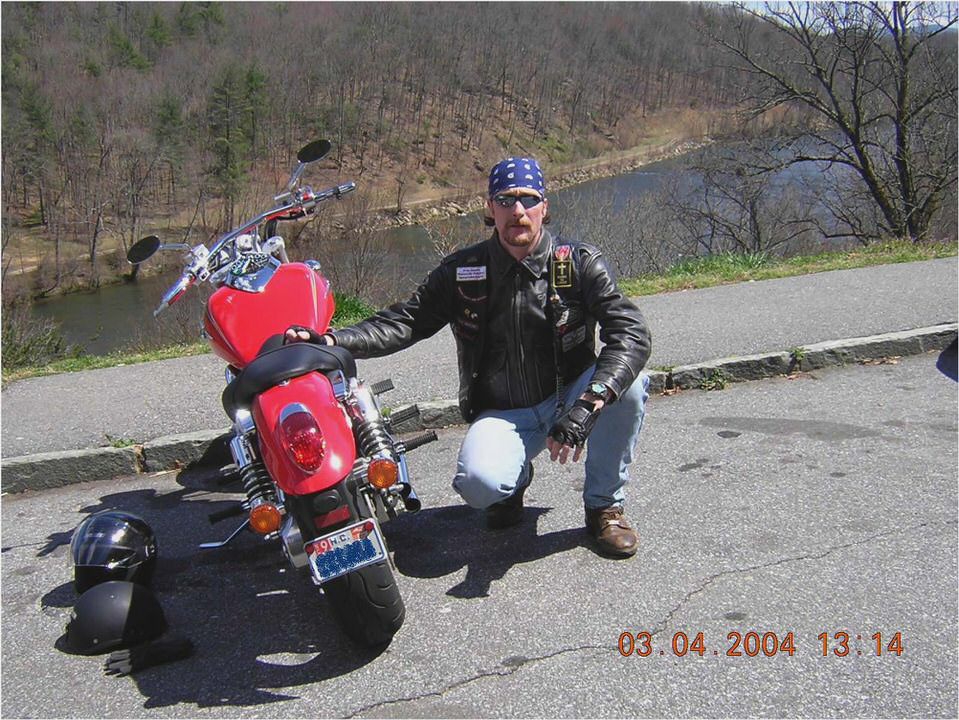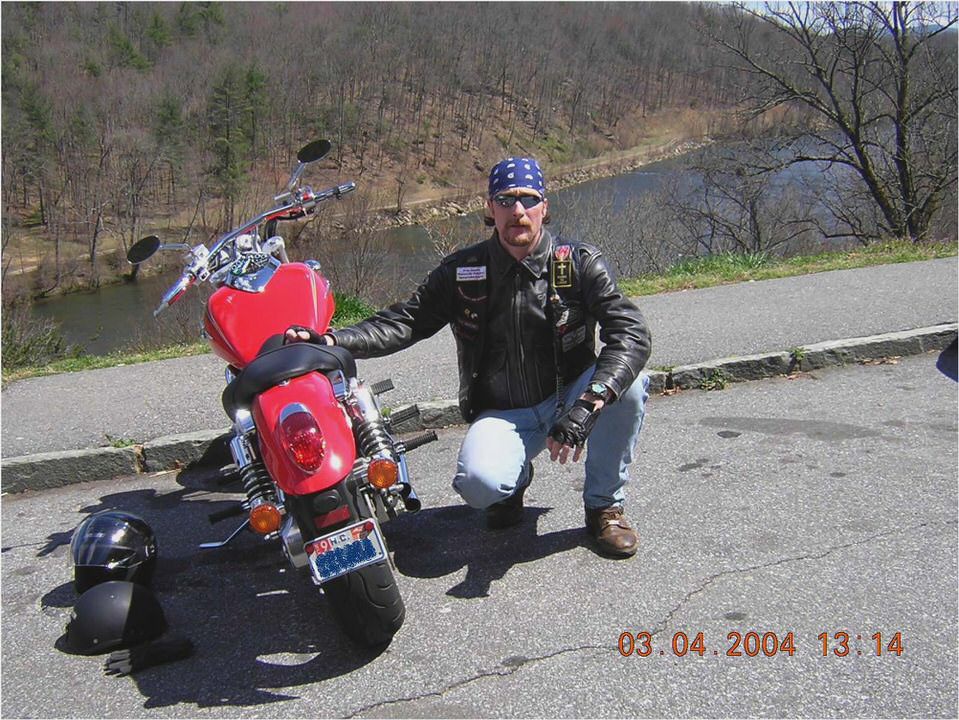
2002 Kawasaki Vulcan 1500 Mean Streak: MD Ride Review
The human mind has been trained to categorize everything. This is Western thinking — something that training in Zen, for instance, tries to lead human beings away from. Reality is not a series of well-defined categories, but, rather, a continuum of subtle differences.
Kawasaki’s 2002 Vulcan 1500 Mean Streak is an outstanding motorcycle, both objectively and subjectively. Objectively, it makes more horsepower, handles and stops better than any other big-bore, V-twin cruiser available at a comparable price (U.S. MSRP is $10,999.00).
The competitor targeted by Kawasaki with the Mean Streak, the Harley-Davidson Softtail Deuce, is heavier, $5,556.00 more expensive (ouch!), will not accept the latest-and-greatest rubber due to odd tire sizes (including a 21 front laced wheel — while the Mean Streak has 17 inchers front and rear) and couldn’t possibly handle or stop any better than the Mean Streak (sorry, Harley, but the Mean Streak sets new standards for handling and braking power in the heavyweight cruiser class, at least for now). Besides all this, the dyno charts I have seen show the Mean Streak making more horsepower and torque than a Deuce.
The fly in the ointment for Kawasaki, if there is one, is the problem with the human mind mentioned earlier. Where does the Mean Streak belong, category-wise? Which bikes are its true competitors?
Before we get to all that nonsense, however, let’s talk about MD’s subjective evaluation of the Mean Streak.
With roughly 66 horsepower at the rear wheel (nearly 12 more than a stock, fuel-injected Vulcan 1500), the Mean Streak comfortably exceeds the 10 percent increase in performance claimed by Kawasaki. Indeed, the Mean Streak makes roughly 20 percent more horsepower at the rear wheel than regular fuel-injected Vulcan 1500s. This results from the engine improvements described in our first Mean Streak article.
Basically, the Mean Streak motor has had several modifications for increased performance, including new camshafts, larger valves, larger fuel injection throttle bodies, new, high compression pistons, and re-designed combustion chamber.
These engine changes, coupled with a re-designed, close-ratio transmission, result in a motorcycle that accelerates briskly and smoothly, with no apparent dips or peaks in the power delivery. The Mean Streak clearly provides the strongest, big-bore, v-twin cruiser engine performance from a stock motorcycle that MD has tested, with the lone exception of Honda’s new VTX1800.
It is in the handling and braking departments, however, that the Mean Streak really opens your eyes. The Mean Streak feels substantially lighter than Honda’s VTX1800, for instance (it is a claimed 68 pounds lighter), and has a fluid handling feel unlike other large cruisers we have ridden. Indeed, the Mean Streak almost feels nimble (certainly, compared to other large cruisers, it is nimble) and never feels cumbersome once above parking lot speeds.
Nevertheless, the Mean Streak is rock steady at high speeds (the bike is capable of exceeding an indicated 110 miles per hour), and the chassis has enough stiffness to provide confidence during quick cornering, as well.
The Mean Streak’s suspension felt a little bit stiff, at first, until rebound damping was slowed in the shocks. Yes, the shock absorbers feature adjustable rebound. They were delivered on position one, and ultimately, I rode the bike with the shocks’ rebound on position three.
After this adjustment, the suspension was reasonably plush, yet stiffer than most cruisers — befitting the performance and handling characteristics of the bike.
The rear shock also features air adjustability — effectively, increasing compression damping (or decreasing compression damping) by adjusting air volume in the shock. This suspension adjustability is a welcome change from most cruisers. You can effectively raise the rear ride height with more air pressure in the shock, and thereby increase steering quickness and ground clearance.
The brakes are the single most impressive performance aspect of the machine. Pulled from Kawasaki’s ZX-9R superbike, the front brakes are simply phenomenal in their performance and feel. The rear brake seems to provide a perfect balance as well.
Together, the brakes could haul the Mean Streak down from high speeds without drama and with superior control. I almost felt I could lock both brakes coming to a stop, and the chassis would remain under control. This is something I have never experienced on a cruiser before.
I would rate the Mean Streak’s brakes even higher than the excellent brakes found on Honda’s VTX1800.
The styling of the Mean Streak is something we like, as well. The evaluation of styling is always subjective, to some extent, but the Mean Streak received virtually unanimous praise from observers. Kawasaki has tastefully pushed cruiser styling towards a drag-bike look, without going too far.
The rear end of the motorcycle has a particularly clean look that is unlike any other production cruiser we know of, and as we mentioned earlier, the tank lacks the ugly seam found on many other bikes.
The seat and seating position are quite comfortable for the rider. The drag bars (another excellent styling element) place your hands in just the right position, and the clutch and brake lever have a comfortable shape.


The transmission shifts smoothly (but requires a fairly firm nudge from your left foot). We did miss a few upshifts when getting lazy with the left boot.
The Mean Streak leaves a stop light with considerable authority, but you are not going to hang with a VTX in the acceleration department.
From the styling to the handling, power delivery and braking performance, the Mean Streak is about balance. Kawasaki has substantially raised the performance level of the typical big-bore, v-twin cruiser, and has come up with a package that not only performs well objectively, but is subjectively pleasing to the rider. The bike is just plain fun to ride (with a pleasing exhaust note), and confidence inspiring in a way that stock cruisers have not been in the past.
The Mean Streak is also a bargain at an MSRP of $10,999. It is not only $1,500 and $1,000 cheaper than the VTX1800 and the soon-to-be-released Yamaha Road Star Warrior, respectively, it is priced at or below the MSRP of some normal cruisers, such as Yamaha’s standard Road Star.
Although the Mean Streak will likely lose some of the dyno and drag-strip shoot-outs soon to be published concerning the new power cruisers, it is hard to imagine a cruiser working much better as a package, and the Mean Streak has significant hop-up potential to bring the motor to the same level as many of the new power cruiser machines.
When I first looked at the work Kawasaki had done to its relatively advanced, liquid-cooled motor, I remember thinking that a lack of air-box volume might be holding down peak horsepower significantly. Feeding those huge cylinders with the Mean Streak’s large valves, more aggressive cam timing, higher compression and higher rev ceiling was the same old Vulcan air box. By contrast, Yamaha elaborately re-designed the Road Star Warrior’s air box for a substantial volume increase over the standard Road Star.
I called around to see which after-market companies had already developed Mean Streak modifications when I came across Thunder Manufacturing of Arizona. Thunder Manufacturing had developed an Air Kit for the Mean Streak consisting of an air box modification device (which bypassed some restrictive passages in the Mean Streak’s stock air box design) and a KN air filter.
This $550.00 kit coupled with an after-market exhaust (Thunder tested with a Vance Hines) netted roughly 80 horsepower and 90 foot pounds of torque at the rear wheel. This horsepower level is approximately 21 percent higher than the 66 horsepower put out by the stock Mean Streak and 48 percent higher than the 54 horsepower put out by a stock Vulcan 1500 FI!
The bottom line is this. If you like the styling of the Mean Streak, you will be very pleased with this machine. It does everything well and has that intangible element that is hard to engineer — character. When Kawasaki’s head of product planning in the United States, John Hoover, created his own custom power-cruiser using the Vulcan platform approximately a year ago (the bike appeared in Cycle World Magazine), I knew Kawasaki was hard at work on a production machine like the Mean Streak.
Kawasaki clearly sweat the details on this bike.
Visit Kawasaki’s web site for further details on the Mean Streak.

- Kawasaki Ninja 650R 2012 Price in India & Specifications
- Kawasaki 1000 Versys Review DIY Reviews!
- Kawasaki Z1000 – Wikipedia, the free encyclopedia
- 2000 Kawasaki Drifter 800 –
- 2011 Kawasaki Vulcan 1700 Vaquero – Motorcycle Cruiser Magazine
